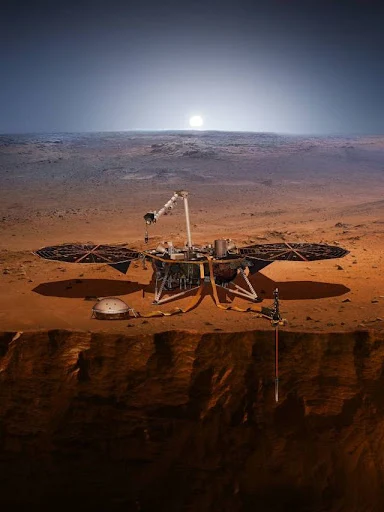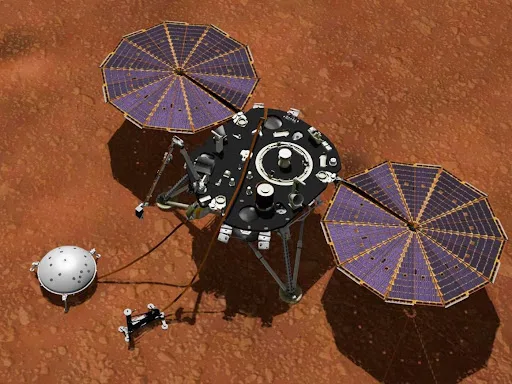InSight, short for Interior Exploration using Seismic Investigations, Geodesy and Heat Transport, was a robotic lander on a mission to become the first to peer deep into the Martian interior. Launched in 2018 by NASA's Jet Propulsion Laboratory (JPL), it successfully landed on Elysium Planitia on Mars in November of that year.
The lander's primary goal was to study the Red Planet's crust, mantle, and core. This mission wasn't just about Mars, though. By studying Mars' formation, scientists hoped to gain a better understanding of how rocky planets, including Earth, came to be billions of years ago.
InSight carried a number of instruments to achieve its goals. A seismometer, called SEIS, meticulously measured vibrations on Mars, revealing details about the planet's internal structure and even detecting "marsquakes." Another key instrument was the Heat Flow Probe (HP3), a self-hammering drill nicknamed "the mole." The mole's purpose was to burrow down to 5 meters (16 feet) and measure heat emanating from the core. Unfortunately, the Martian soil proved unexpectedly clumpy, and the mole was unable to dig as deep as planned.
Despite this setback, InSight's mission yielded a wealth of data. The seismic information provided insights not just about Mars' interior but also about its weather and atmospheric events. Scientists were able to use the data to map the layers of Mars' interior, including the surprisingly strong remnants of an ancient magnetic dynamo.
In December 2022, after four years of productive science gathering, NASA announced the end of the InSight mission. The lander's solar panels had accumulated too much dust, hindering its ability to recharge its batteries. While the mission is over, the data collected by InSight will continue to be a valuable resource for scientists studying Mars and the formation of rocky planets for years to come.

